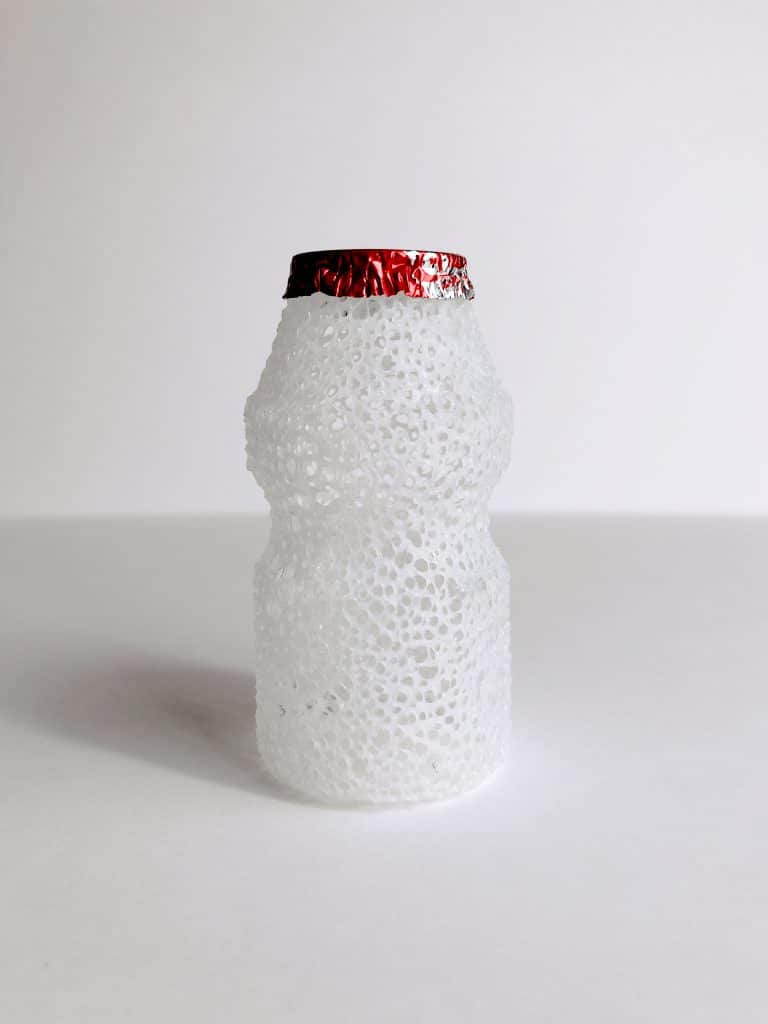The Tokyo-based artist burns and perforates plastic objects into myriad tiny holes that let light filter through, creating new textures for sparkling artworks.

Nina Nomura performs small miracles with this material that was long favored by 20th-century society, before proving to be harmful to the environment. The 29-year-old Japanese artist, who graduated from the Kuwasawa Design School with a degree in space design, breathes new life into it.
Armed with a soldering iron and an air-supply mask, she burns all sorts of appliances, products, and plastic objects from everyday life, creating multiple holes that let the light filter through. The perforation then reveals the origin of this material, where luminous cells emerge, giving them the appearance of molecular structures.
Her most recent exhibition, “Life Through Holes,” presented a household installation, composed of a refrigerator, a table and four chairs, with kitchen utensils and product packaging. The rendering remains impressive, immersing us in an imaginary, fairy-tale or icy setting. Glittering breakthroughs that, when seen up close, look like diamond crystals.

Meticulous process
Nina Nomura’s work encourages us to question the origins of this material, the way we use it every day, and its impact on the planet.
“Plastic is made from petroleum,” she reminds us. “This fossil fuel was formed from the carcasses of marine organisms, such as plankton, algae, and bacteria. Over millions of years of intense heat and pressure on Earth, these remains were transformed into carbon-rich substances that we depend on as feedstocks for fuel and a wide variety of products.”


Her designs, however, are not intended to slow or change the catastrophic consequences of plastic. As she puts it, the material, broken down into “tiny particles,” continues to spread “to the far reaches of our planet, our own digestive systems, and those of creatures lurking in the deep ocean.” Its meticulous process seeks, above all, to identify its origin in order to find a new, more natural life cycle for it.
Nathalie Dassa
